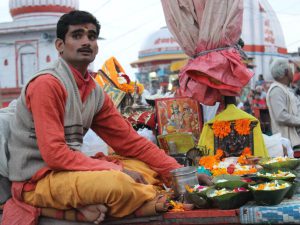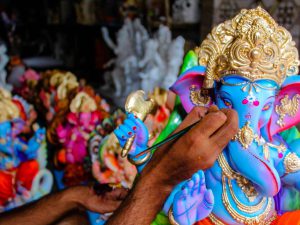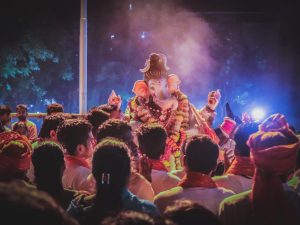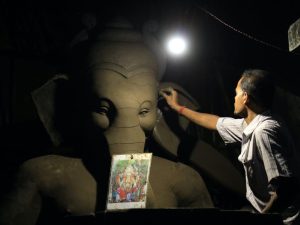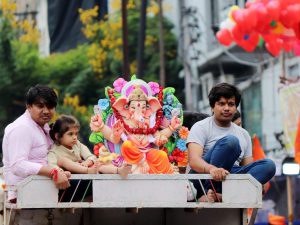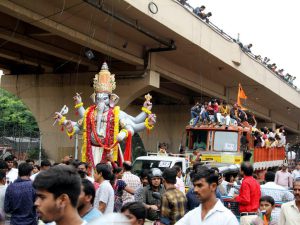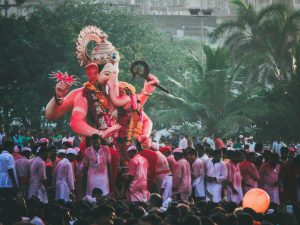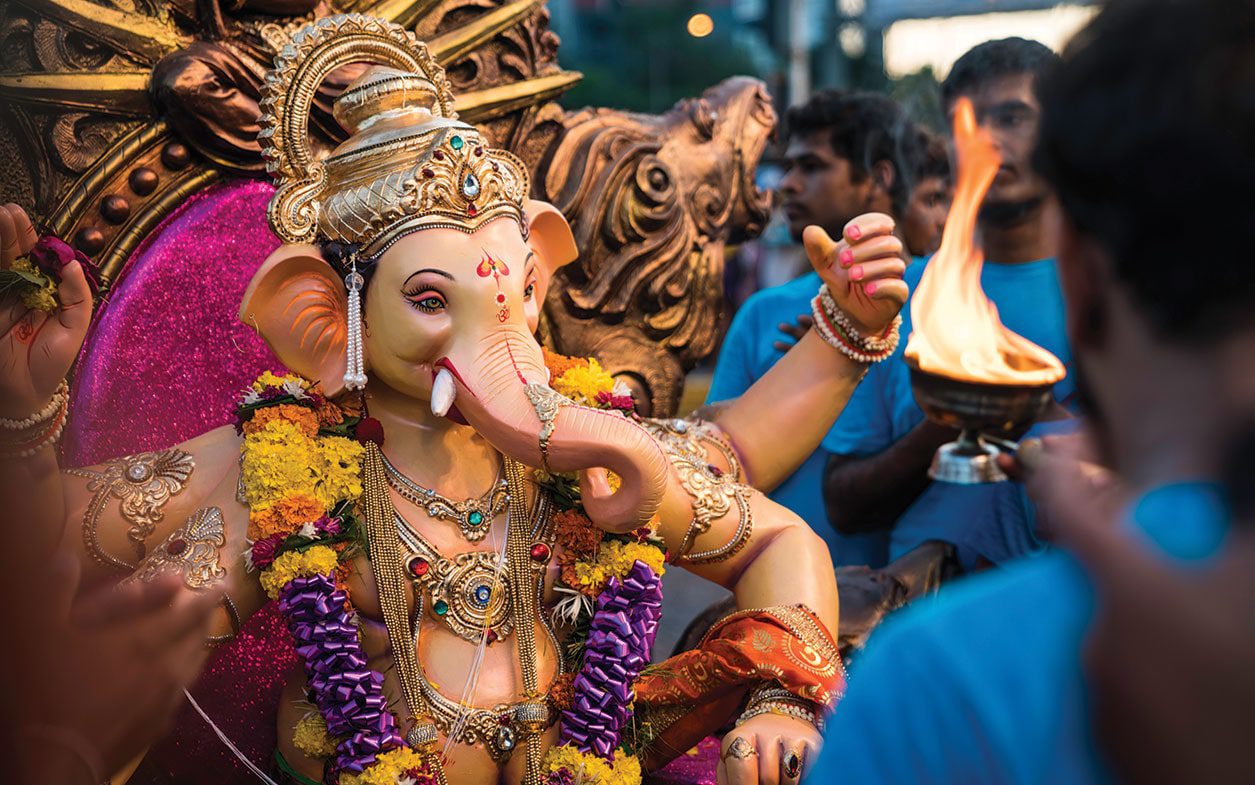
art of travel
What’s New
STAYS TO WATCH OUT FOR
New Hotels
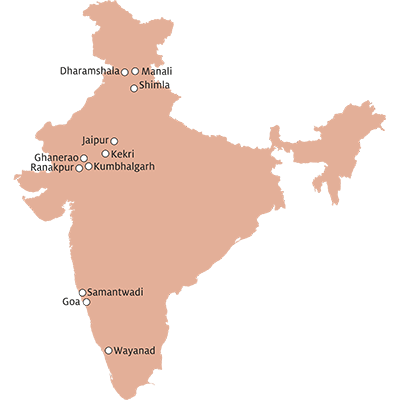
- Sitara Himalaya, Manali
- Fort Chhabariya, Kekri
- Sawantwadi Palace, Sawantwadi
- WelcomHeritage Elysium, Shimla
- Cloud’s End Villa, Dharamshala
- Fairfield By Marriott Jaipur
- The Trishala Villas, Ranakpur
- Radisson Blu Resort, Kumbhalgarh
- Aloof Jungle Lodge, Ghanerao
- Storii by ITC-Moira Riviera-Moira, Goa
- Aramb Resort, Wayanad
We Are Excited About
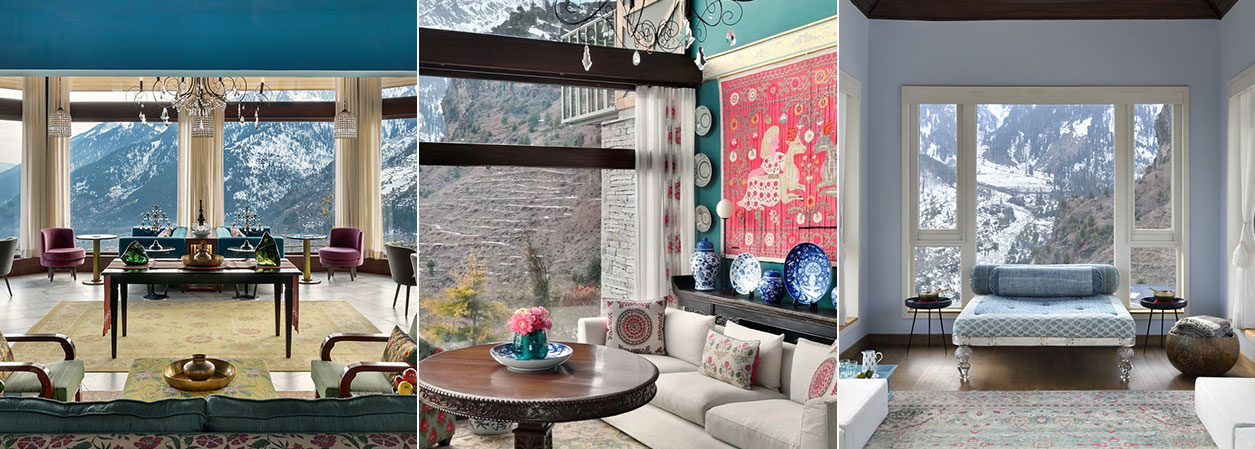
Sitara Himalaya, Manali
Located at an altitude of 8,200 feet, 13km from Manali, on the way to the ancient Buddhist valleys of Lahaul and Spiti, this plush 10-bedroom garden retreat is the brainchild of Anita Lal, founder of India’s iconic lifestyle brand Good Earth. Sitara Himalaya is ideal for guests who want to soak in the tranquility and spirituality of the Himalayas and get away from it all at the end of their tour.
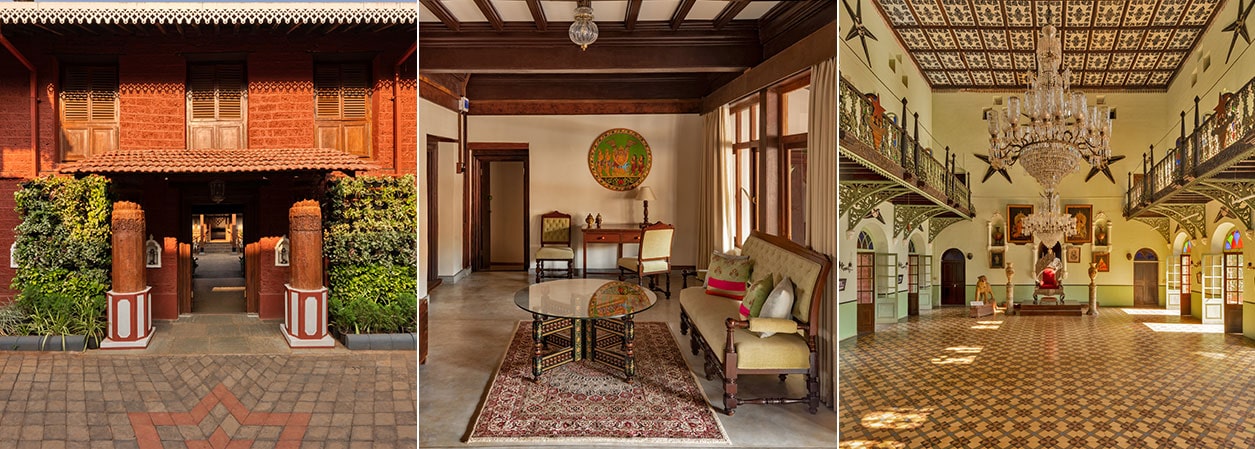
Sawantwadi Palace, Sawantwadi
Located 90 mins North of Panjim, the capital city of Goa, the 18th-century Sawantwadi Palace is home of the Royal family of Sawantwadi. It is now converted into a heritage boutique hotel with 6 rooms. Spread over 6.5 acres, every room is adorned with Ganjifa art and the traditional woodwork of Sawantwadi. Experience the old-world charm of the Konkan region with all modern amenities such as the swimming pool and a restaurant offering global cuisines. Sawantwadi Palace is ideal for guests who want to deep dive into the heritage, culture, art, craft and cuisine of lesser known destinations in India. (more about Sawantwadi in our Explore Section)
Get in touch with your relationship manager to know more.
EXPERIENCES TO WATCH OUT FOR
New Experiences
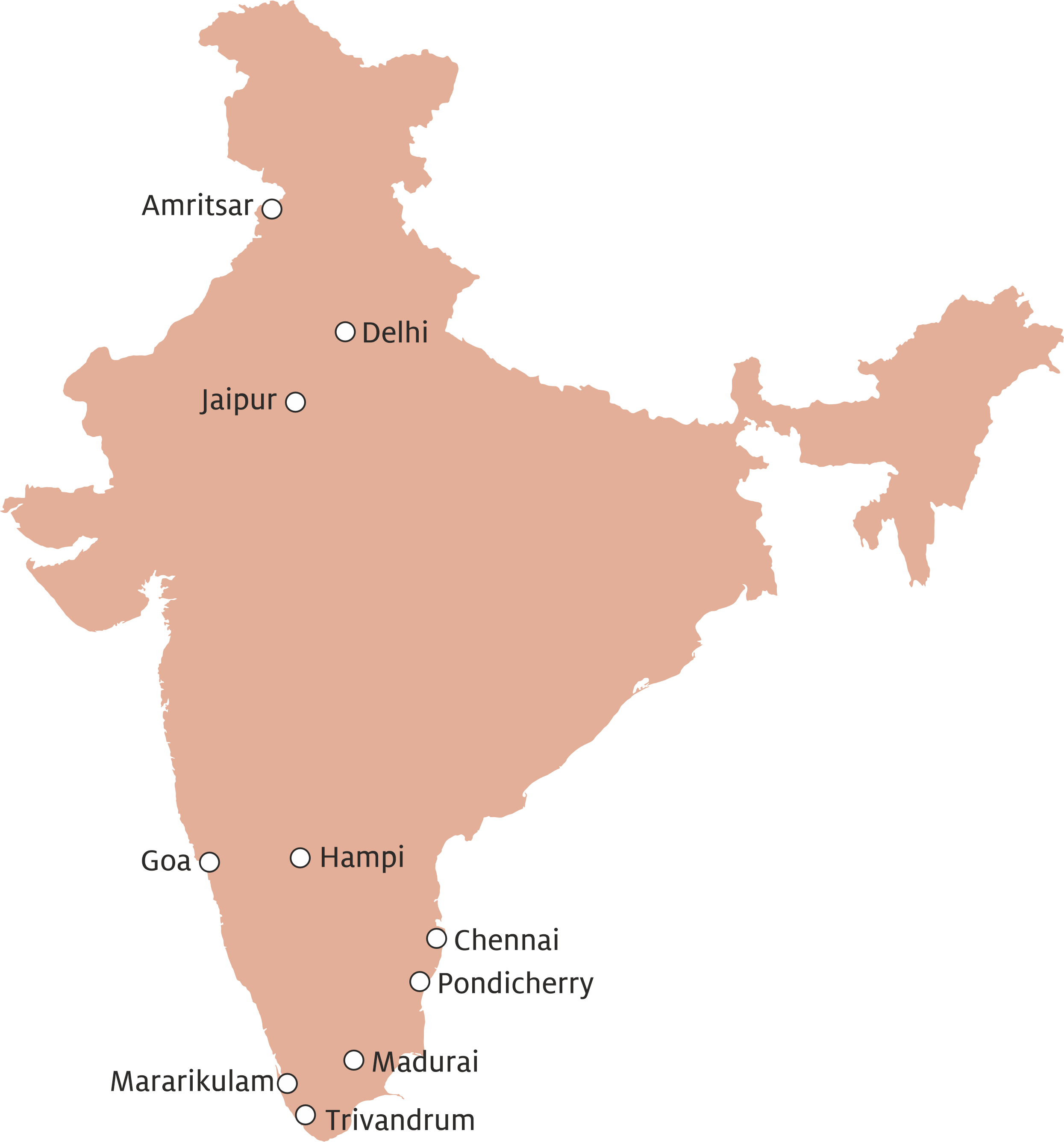
- Rural Amritsar, Amritsar
- History and Good Food, Delhi
- Art Tour, Delhi
- Craft Tour, Jaipur
- The Hidden Paradise, Goa
- Good Morning Hampi, Hampi
- Across the Tungabhadra, Hampi
- A Legacy of Trade and Justice, Chennai
- Once Upon a Time in Pondicherry, Pondicherry
- Rural Madurai, Madurai
- Across Marari, Mararikulam
- Rural Trivandrum, Trivandrum
We Are Excited About
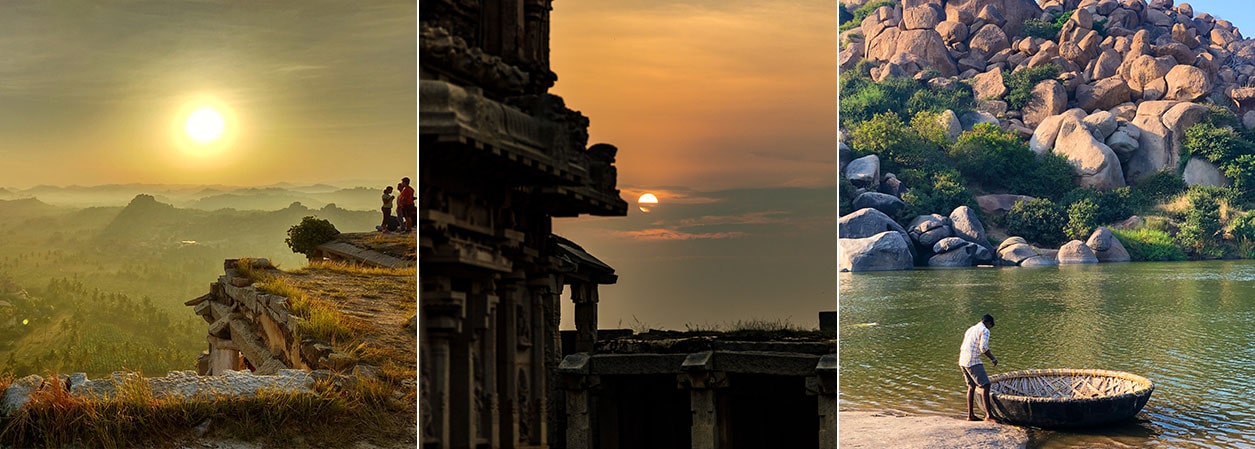
Good Morning Hampi, Hampi
Hampi in Karnataka with its surreal landscape is India’s Angkor Wat and was once the capital of the Vijayanagara Empire. We are really excited about these new out-of-the-ordinary tours in Hampi which we plan to experience firsthand by the end of this year.
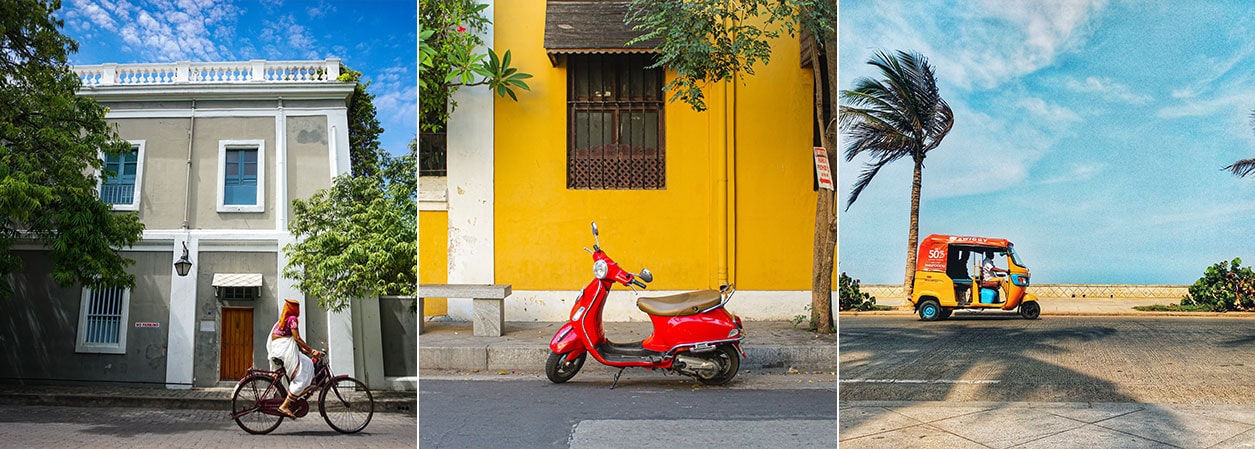
Once Upon a Time in Pondicherry, Pondicherry
Once upon a time in Pondicherry is developed in-house in collaboration with our Pondicherry office. Explore-mainstream-but-different in this new tour of Pondicherry which is exclusive to us. We have a half-day and a full-day option for guests visiting this quaint former French colony of Tamil Nadu in South India.
Get in touch with your relationship manager to know more.
ITINERARY OF THE MONTH
Sustainable Kerala
Routing: Calicut – Palakkad – Munnar – Kumarakom – Cochin
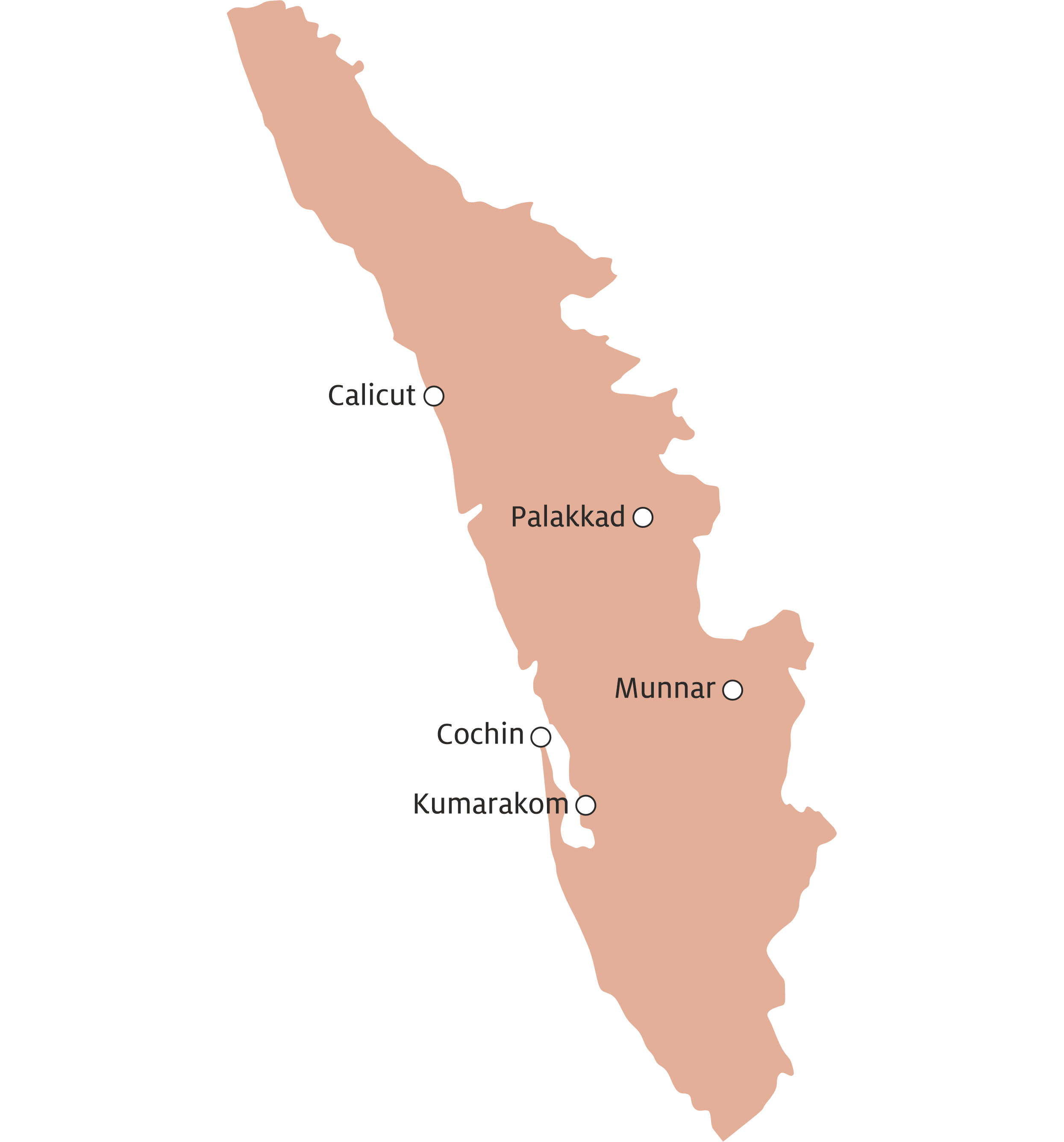
Highlights of the Tour
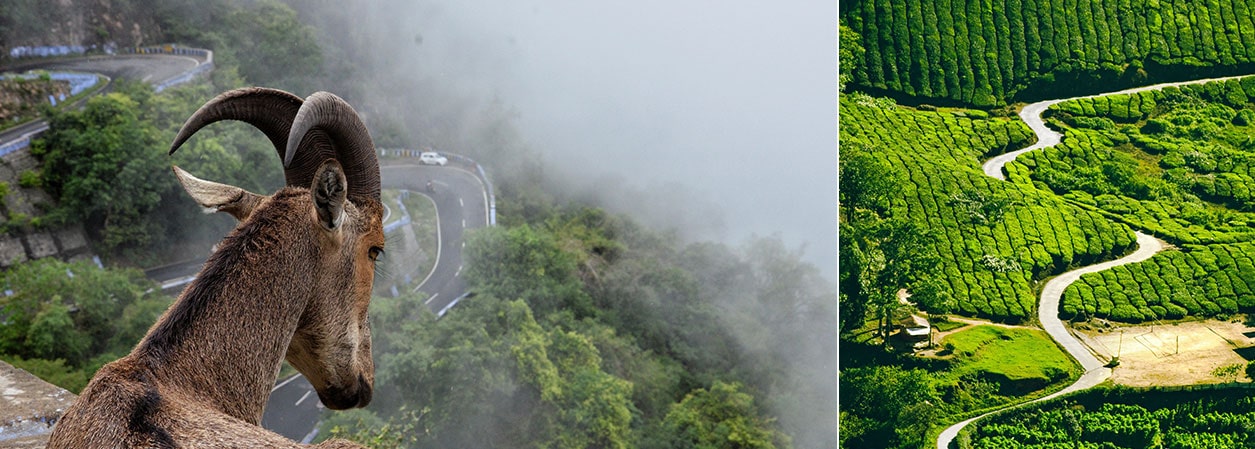
- Handpicked Homestays.
- Ayurveda.
- Interaction with volunteers who protect Mangroves.
- Age-old living traditions of Kerala.
- Nature Trails where all income generated goes directly for the conservation of endangered species.
- Interaction with NGOs that work with local communities to protect Kerela’s unique ecology.
- Daily rhythm of rural Kerala.
- Women Guides.
- Insight into the local transport system of Kerala.
Get in touch with your relationship manager to know more..
TRAVEL
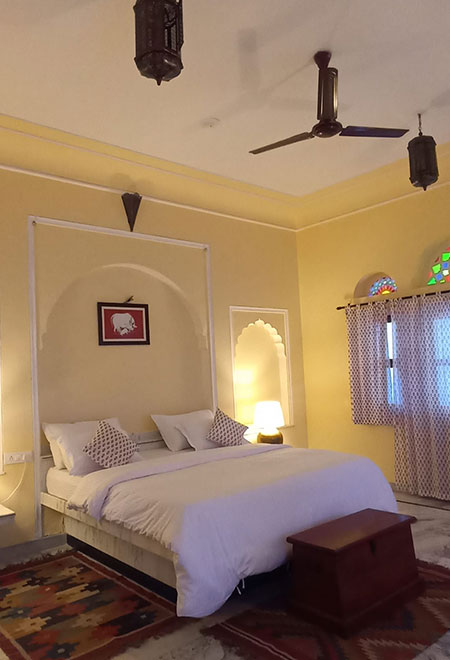
Fort Chhabariya, Kekri
Sanjay Sharma, Head of Operations, North India recently visited Fort Chhabariya at Kekri, Rajasthan. This 11-room heritage property is a three hours’ drive from Jaipur, two and half hours from the Tiger Park of Ranthambore, and a 5 hours’ drive from both Jodhpur and Udaipur. “Fort Chhabariya is a brilliant mix of traditional hospitality of Rajasthan with modern comforts. From the moment you arrive at Fort Chhabariya, you are transported to a bygone era. The fort’s beautiful architecture takes you on a journey back in time, providing a unique glimpse of Rajasthan. The food here is delectable homemade-style. The poolside area offers a tranquil spot to unwind with a good book or simply take in the breathtaking views of the surrounding landscape. The lush green gardens, add to the serenity of the place. The stepwells at Todarai Singh and Bisalpur are a must-visit, showcasing the ingenious engineering of the past and offering an insight into the significance of water conservation in this arid region. A hidden gem of Rajasthan. Highly recommended,” says Sanjay.
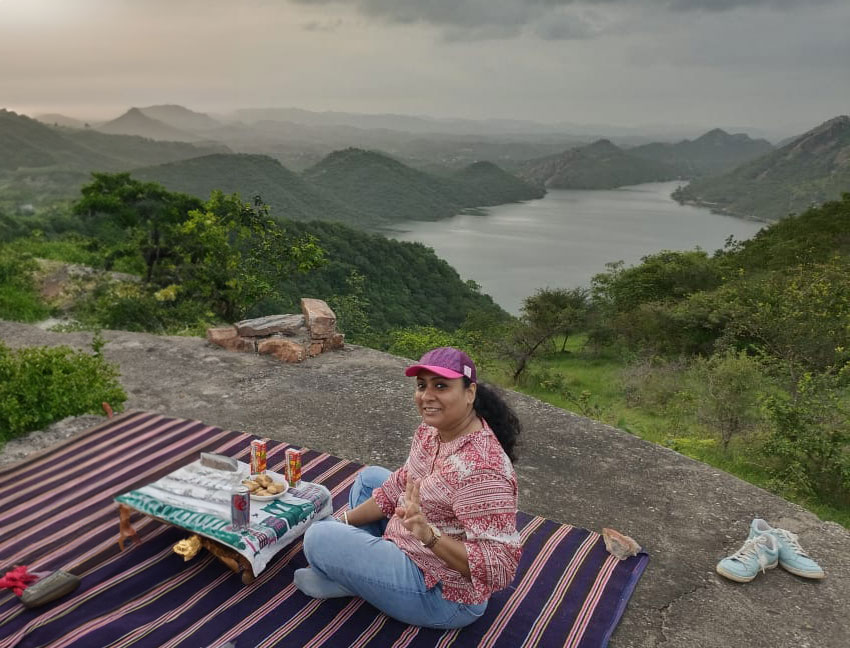
Udaipur
Soma Paul, Product Manager, Destination Knowledge Centre is just back from Udaipur. Stay tuned for her report on the new discoveries in Udaipur.
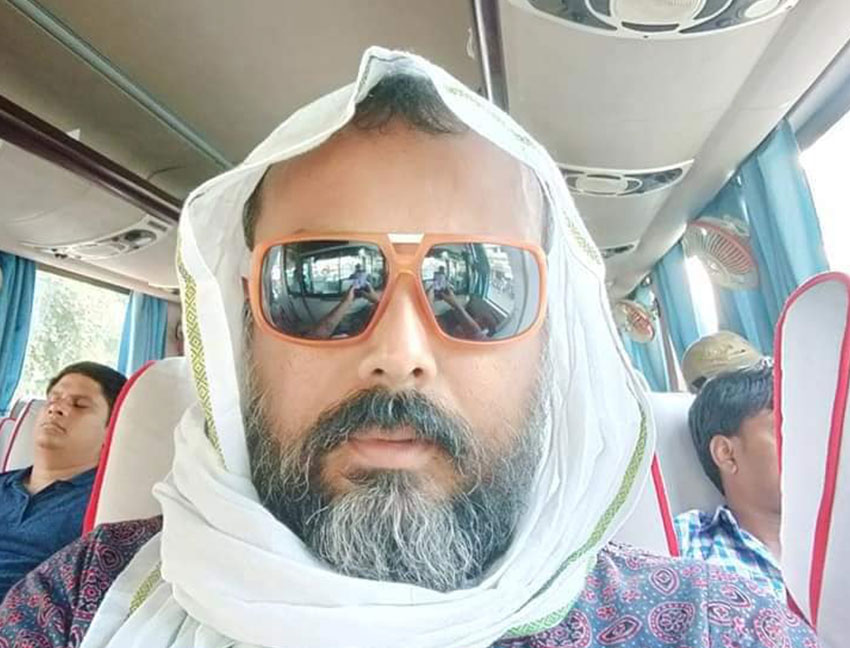
Kerala and Tamil Nadu
Kuntil Baruwa, Explorer, Destination Knowledge Centre is heading to Kerala and Tamil Nadu in September. There are a couple of very interesting ideas lined up during this trip. Stay Tuned.
NEW SERVICES
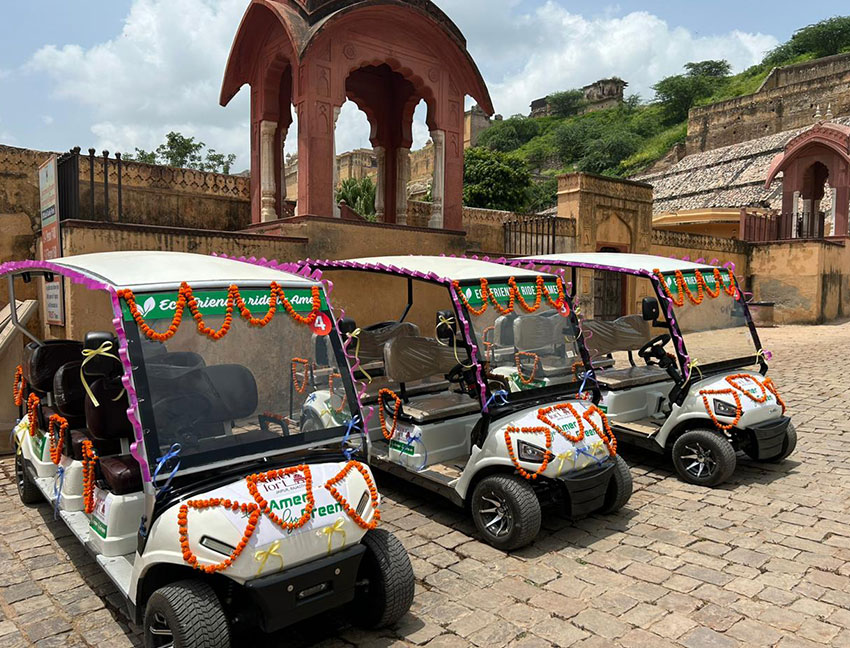
Golf Carts relaunched at Amber Fort in Jaipur
Electric golf carts have been relaunched at the historic Amber Fort in Jaipur. At present there are 10 carts available from 12 noon till 17:00 hrs to take guests up to the stunning fort.
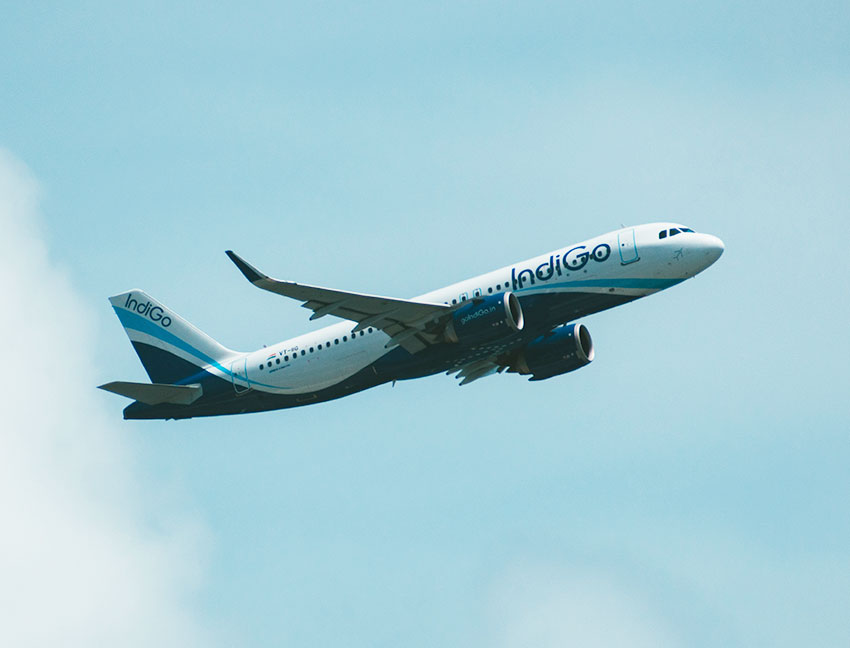
New Daily Non-Stop Flights
- Varanasi – Khajuraho – Varanasi by Indigo Airlines from October 10, 2023
- Delhi – Jaisalmer – Delhi by Indigo Airlines from Oct 12, 2023
- Mumbai – Jaisalmer-Mumbai by Indigo Airlines from Oct 29, 2023
- Jaipur – Jaisalmer-Jaipur by Indigo Airlines from Oct 29, 2023
- Ahmedabad – Jaisalmer-Ahmedabad by Indigo Airlines from Oct 29, 2023
Get in touch with your relationship manager to know more
Stories from India
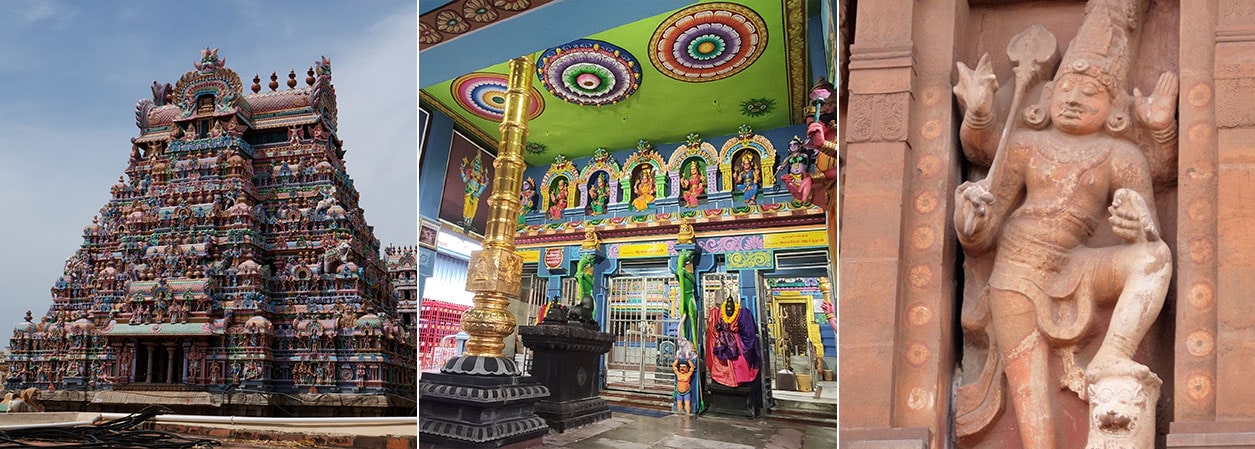
Dravidian Temple Architecture
Unlike the North, the South of India, having been relatively free from repeated foreign invasions, is dotted with thousands of temples. Built in the stunning Dravidian style of architecture which flourished between the 7th century to about the 16th century, these temples were not just places of worship but also centres of art, music, dance, and more. They still continue to be hubs of religious, cultural, and social life providing livelihoods to tens of thousands of people.
HISTORY: The Dravidian style of architecture was pioneered by the Pallava Kings who were at the height of their power in the 7th century, reached its peak under the Chola Kings in the 10th century, continued to flourish under the Vijayanagara empire till the 16th century and with its collapse and the declaration of independence of various Nayakas (Chieftains) marked the last phase of this ever-living style of temple architecture of South India. The earliest examples of the Dravidian style of architecture were the iconic rock-cut monoliths of Mahabalipuram and Kancheepuram. In fact, it is said that Mahabalipuram served as a laboratory for the Pallavas to experiment with various building techniques. Soon enough important breakthroughs were achieved under the Pallavas in the form of the Gopuram (temple gateway tower), Vimana (the multi-tiered structure just above the shrine that resembles a stepped pyramid), and the Prakara (the enclosure wall that surrounds the temple) which are unique features of Dravidian Temple Architecture. The Cholas borrowed several concepts from the Pallavas and refined them. The Brihadeeswarar temples at Tanjore and Gangaikondacholapuram are two masterpieces of Dravidian architecture under the Cholas. Constructed out of large blocks of granite, both temples are massive, not only just in size but also in vision and execution. It is astonishing to know, for example, that its sixteen-storeyed Vimana of the Brihadeeswarar temple built more than a thousand years ago
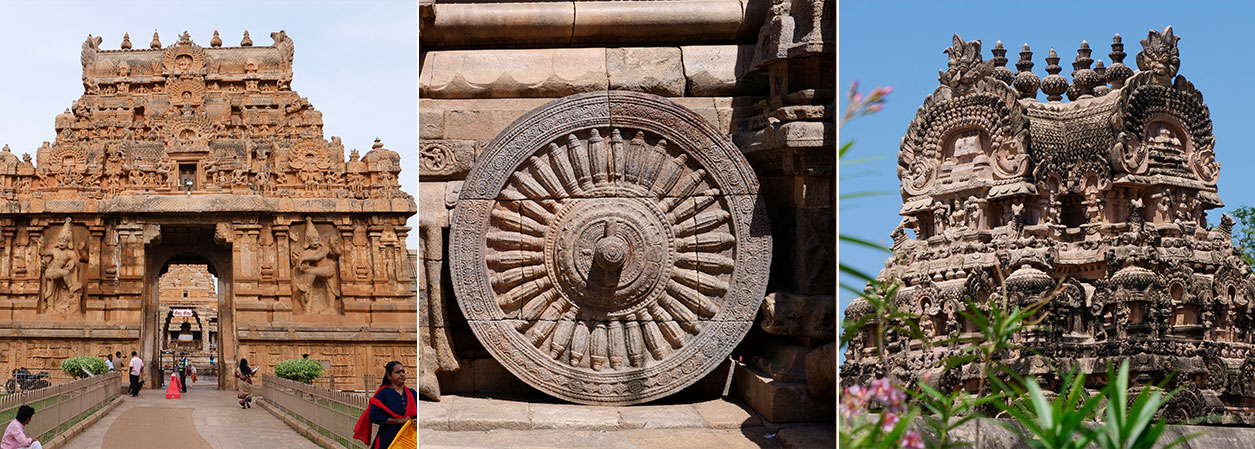
is topped by a massive stone weighing eighty thousand kilograms. Whilst visitors are blown away by the surreal landscape of the ruins of Hampi, the Angkor Wat of India and once the capital of the Vijayanagara Empire, a magnificent example of Dravidian architecture during the Vijayanagara era can be seen at the Ranganathaswamy temple at Srirangam in Trichy. It is not too far away from Tanjore and the Brihadeeswarar Temple. The Hall of Thousand Pillars here, beautifully carved with sculptures of wildly rearing horses with riders on their backs, is stunning and not to be missed. The last phase of Dravidian architecture was witnessed under the Nayakas who declared their independence after the fall of the Vijayanagara Empire in the 16th century. The southern Gopuram (temple gateway tower) of Madurai’s grand and most revered Meenakshi Amman temple is one of the finest examples of built Dravidian architecture under the Nayakas.
SOCIO-ECONOMIC-CULTURAL INFLUENCE: The influence of these temples extended beyond the religious and the spiritual. They brought about far-reaching socio-economic and cultural impacts on society. The construction of a temple took several years, often decades, and sometimes spanned over a couple of centuries with each King adding their own to the structure. This resulted in employment for hundreds of people – both skilled and unskilled for generations. The temples, while they are being constructed, served as a training ground for the finest sculptors and artisans who enjoyed the patronage of the Kings and didn’t have to worry about anything else. Their only job was to create, train and pass on their knowledge. The daily rituals of the temples also ensured employment for a large section of people such as priests, florists, tailors, musicians, dancers, etc. Pilgrims from neighbouring provinces arriving to pay their obeisance in the temples resulted in thriving businesses to cater to their needs which in turn generated more employment.
FEATURES OF DRAVIDIAN ARCHITECTURE: In Dravidian temple architecture, the main structure (i.e. the temple) surrounded by a Prakara (enclosure wall) and accessed by a grand Gopuram (temple gateway tower) is divided into several sections, each with their own unique function. The Garbha Griha (Sanctum Sanctorum) above which is the Vimana (the multi-tiered structure resembling a stepped pyramid) is where the presiding deity resides and is worshipped. The Maha Mandapa (closed hall), Mandapa (semi-closed hall), and Ardha Mandapa (porch) are spaces for the devotees to congregate and also for social functions such as marriages. The Natya Mandapa is for classical dance performances. It is worth mentioning here that many classical dance forms of South India originated in the temples and were once exclusively performed there. Don’t forget to look out for the water tanks in a variety of shapes and sizes in the temples for ritualistic purposes and large statues of Nandis (the divine bull who is the mount of the Hindu God Shiva) with a Mandapa (semi-closed hall) of their own – all unique features of the Dravidian Temple Architecture.
WE RECOMMEND: Some of the most famous and stunning Dravidian Temples are included in a Tamil Nadu itinerary (from Chennai to Madurai) and are the highlights. We also recommend a walking tour around the Meenakshi Amman Temple of Madurai or Mylapore in Chennai which offers the perfect opportunity to witness how the community became a part of the temple and vice versa.
Additionally, an extension to Bangalore and Hampi is highly recommended for guests interested in Dravidian architecture.
Fly from Madurai to Bangalore non-stop for a couple of nights
Highlights in Bangalore –
- The 20th century Vidhan Soudha – made in the Neo Dravidian Style
- The 16th century Bull Temple – the last phase of Dravidian style under the Nayakas (after they declared their independence when the Vijayanagara Empire collapsed)
- The 9th-century Bhoga Nandeeshwara Temple – made in the classical Dravidian style that preserves the legacies of 5 dynasties. It is an excellent example of the confluence of architecture across different dynasties.
From Bangalore continue by surface to India’s Angkor Wat, Hampi where the glorious past of the Vijayanagara Empire under whom the Dravidian style of architecture flourished after the downfall of the Cholas is so ever present in the surreal landscape. After Hampi we recommend a couple of nights to explore the stunning temples at Aihole, Badami and Pattadakal. They are the largest and earliest group of monuments which comprehensively demonstrates the evolution in Hindu rock-cut and temple architecture in India. End the tour at the delightful Om Beach or Paradise Beach in Gokarna. Fly home from the Goa Airport which is 3 hrs/30 mins away.
Write to your relationship manager to get a copy of the detailed itinerary.
Sustainability and Us
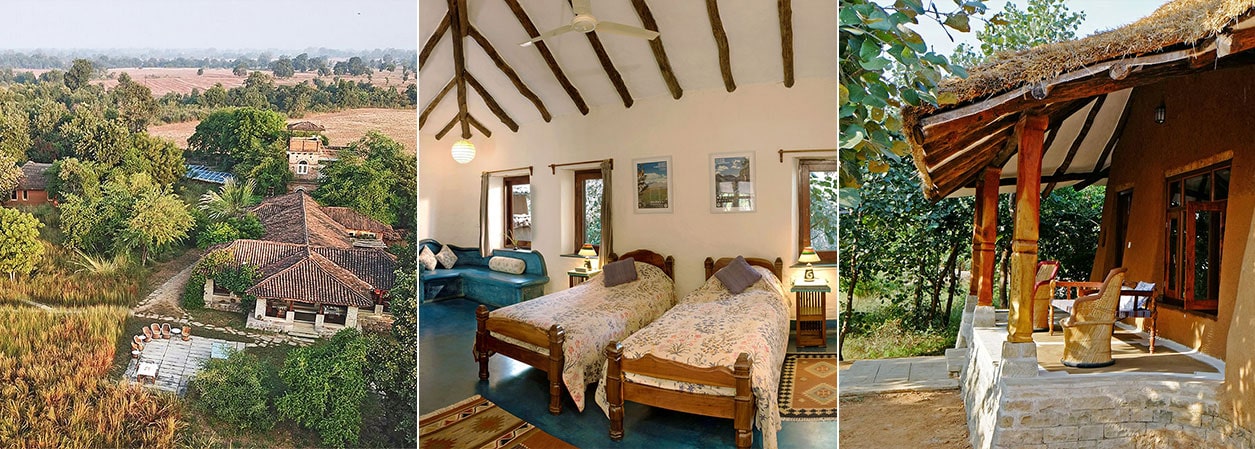
The Sarai at Toria
By Joanna Van Gruisen and Dr. Raghu Chundawat
The Sarai at Toria was born from our decision to leave city life and return to rural living in Madhya Pradesh; we wished to continue conservation and research work around the Panna Tiger Reserve as an extension of Raghu’s ten-year ecological study on the tiger there. Running a small hotel seemed like a synergistic way to maintain ourselves and feed into the conservation trust, Baavan–bagh aap aur van, which we had founded for this.
We created The Sarai at Toria as a unique, culturally-appropriate accommodation for visitors to the UNESCO World Heritage site of Khajuraho. It is situated only 20-30 minutes from the temples at a stunning location on the banks of the Ken River, facing the hills of the Panna Reserve. The natural beauty of the location and the fact that we both come from wildlife-related backgrounds meant that when it came to creating the Sarai at Toria in 2009, keeping our carbon footprint as low as possible was the core foundation of our project. We minimised the use of steel and concrete, used local materials, and adapted the local vernacular architectural style. The cottages are made from mud with thatched roofs and the dining/sitting area is an open structure created with locally sourced stone and wood pillars with locally made pottery tiles for roofing. The surrounding landscape was left natural to avoid the need for watering, and to encourage the continuing presence of wildlife from dragonflies and butterflies to jungle cats and the nilgai. The birdlife is wonderfully varied as we not only have the river habitat but grassland and woodland ones too.
We also try to run the lodge on sustainable lines, with minimum plastic. From the start, we eschewed the plastic water bottle and went against conventional tourist industry wisdom that advised us that you could not run a hotel without packaged water. We placed our RO filter where it could be seen and in our first ten years, all our guests accepted this without comment. We use decanted toiletries and natural cleaning materials, compost all our wet waste and recycle all that is possible. The compost is useful for the organic garden we developed to grow some of the herbs and salad vegetables that are not available in the local village markets. We do set menus to minimise waste and as far as possible use local products so as to benefit the local economy. Almost all our staff are from the surrounding villages; they have been trained by us and the natural warmth of their hospitality shows through.
Overall our attempt is to provide a luxury stay without it costing the earth – in literal terms. Luxury for us is elegant and comfortable simplicity rather than the excess that has historically been associated with the term.
*** This article is a part of our yearlong showcase of The Sarai at Toria’s incredible journey setting the blue print of what a responsible business in hospitality should look like. Joanna Van Gruisen is from the U.K. but she has lived in the sub-continent for over thirty years. She is a wildlife photographer, writer and conservationist. Dr. Raghu Chundawat is a conservation biologist whose main studies have been on snow leopards and tigers. His pioneering ten-year research on tigers took place in the Panna Tiger Reserve and has been immortalised in the BBC Natural World documentary, “Tigers of the Emerald Forest”. Joanna Van Gruisen and Dr. Raghu Chundawat are the owners of The Sarai at Toria.
Explore
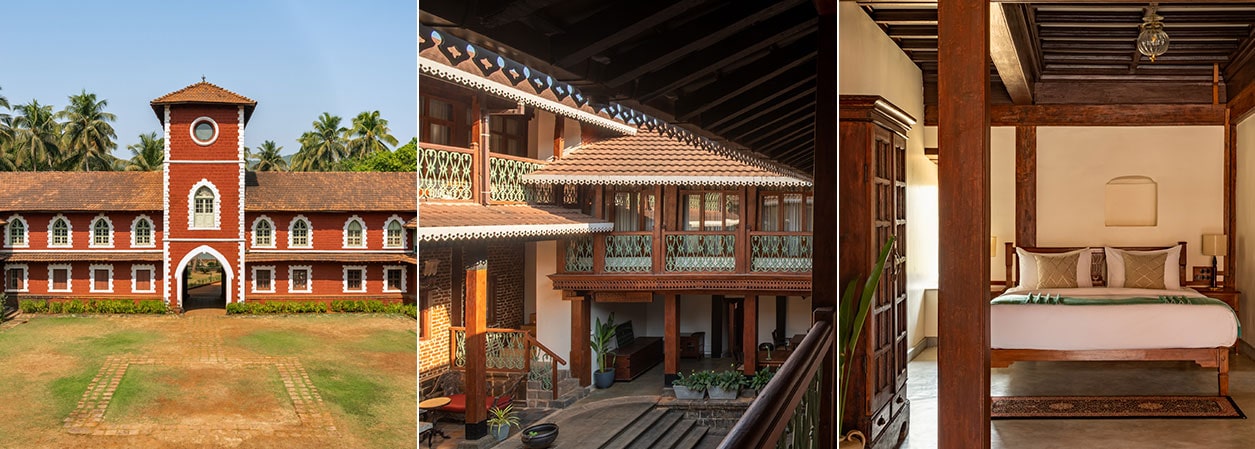
Sawantwadi – Konkan’s oasis of tranquillity soaked in art and culture
From the Travel Diary of Inderjeet Rathod, Business Support, Destination Knowledge Centre
Located 90 mins North of Panjim, the capital city of Goa, the quaint town of Sawantwadi is a perfect place to immerse in the heritage, culture, and cuisine of the Konkan region. The Konkan extends throughout the western coasts of the states of Maharashtra, Goa, and Karnataka. Built around a man-made lake called Moti Talao, Sawantwadi is well known for its woodcraft industry and lacquerware art.
Best time to visit
November to February
Sites to visit in and around the city
Sawantwadi Palace
The 18th-century Sawantwadi Palace, built by the Royals who once ruled Sawantwadi stands as a pride of the city. This two-storied structure is truly an architectural masterpiece that effortlessly merges the English arches with the native workmanship and the vibrant red laterite stones found abundantly in this area. It has a beautiful façade square at the centre, covered with an immaculate lawn surrounded by rooms on all four sides. The Durbar Hall in the palace is like a museum of antiques, painstakingly restored recently.
Traditional Konkani Temples
In the outskirts of Sawantwadi (Walawal and Dhamapur) lie temples built in traditional Konkani architecture – slanted tiled roofs, walls built with red stone blocks, wide ceremony halls with a low ceiling, wooden pillars painted with bright colours, and the façade of the deity room adorned with beautiful carvings. The temple’s courtyards have huge towers dedicated to lighting earthen lamps. The architecture of these Konkani temples is quite interesting and different from temples in other parts of the country.
Thakar Adivasi Kala Angan Museum
Located in Pinguli village near Kudal, about 25 km away from Sawantwadi Palace, this museum is a repository of the Thakar tribe’s traditional Folk Arts and Crafts such as Chitrakathi paintings, shadow puppets, and string puppets. It aims to revive the folk-art tradition by creating a platform for the Thakar community artists to pursue their traditional crafts and open avenues for them to have a creative exchange with patrons from all over the world.
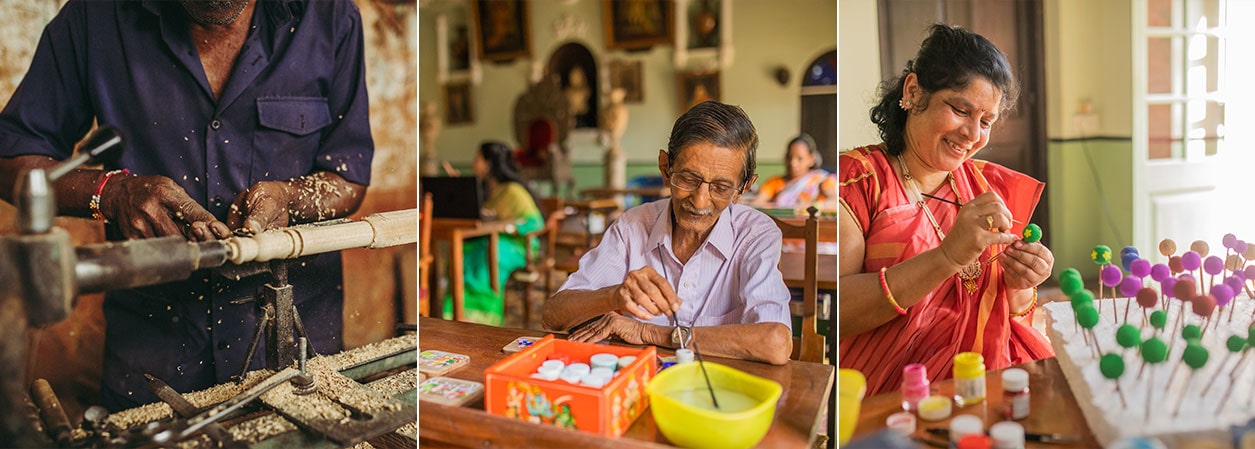
Handicrafts and Arts
Chitrakathi paintings
Chitrakathi paintings are part of an oral storytelling tradition. ‘Chitra’ means painting and ‘katha’ is a story in any form. Chitrakathi is the combination of oral narratives performed simultaneously with hand-painted pictures. They largely depict stories from the age-old Indian epics, Mahabharata and Ramayana. The performers modulate their voices to create dialogue and drama, the performance is also backed by vocals and traditional musical instruments. The village of Pinguli which houses the Thakar Adivasi Kala Angan Museum is also home to a few families of the Thakar tribe who practice this art.
Sawantwadi Wooden Toys
Sawantwadi is known to produce wooden toys made up of lightweight ‘pangara’ wood which is found in abundance here. These toys are carved out and coated with priming made of Tamarind seed powder which makes them long-lasting. After drying they are polished and the surface is painted with water colours. Some of the wooden toys popular among visitors are – a plateful of real-sized fruits, small cars, trucks, bullock carts, and figurines with movable parts, etc.
Ganjifa Cards
The famous handmade Ganjifa cards of Sawantwadi are made from circular pieces of paper on which intricate designs are hand-painted in vivid colours characterised by floral and mythological motifs. Each pack contains 120 hand-painted cards housed in a colourful box. Ganjifa are just not playing cards, they carry with them the iconography of imperial courts that existed in medieval India.
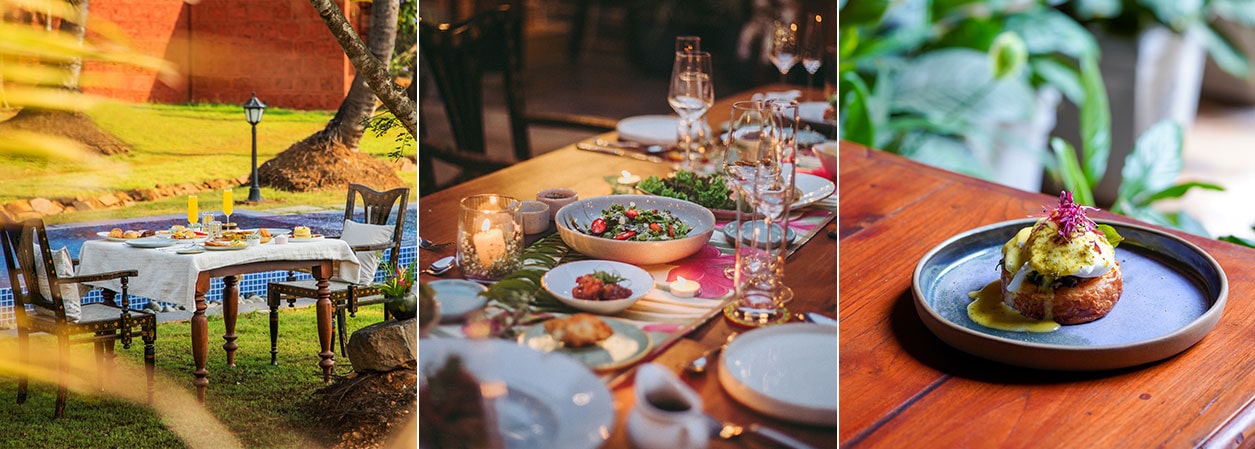
Cuisine
The quintessential cuisine of Sawantwadi is dominated by fish. Women here are known for their ability to cook the most delicious fare in a jiffy, including excellent vegetarian dishes. When visiting Sawantwadi, a must try is the sol kadhi which is an integral part of Konkan cuisine. Its base is made using kokum and coconut milk and it’s spiced with green chili and garlic paste.
Festivals
Sawantwadi is a great place to experience Ganesh Chaturthi without the crowds of Mumbai during the festival. Ganesh Chaturthi is a ten-day festival that celebrates the birthday of Ganesha; the elephant-headed Hindu deity during the month of August/September (more in our Festival section)
Stays we recommend
The 18th-century Sawantwadi Palace, home of the Royal family of Sawantwadi, now converted into a heritage boutique hotel with 6 rooms. Spread over 6.5 acres, every room is adorned with Ganjifa art and the traditional woodwork of Sawantwadi. Experience the old-world charm of the Konkan region with all modern amenities such as the swimming pool and a restaurant offering global cuisines.
https://sawantwadipalace.com/stay
Accessibility
Sawantwadi is best accessed from Panjim (Goa) by road, being only 60 km away.
The new Airport of Goa at Mopa is located 40 km away from Sawantwadi. Mopa is connected to Mumbai, Delhi, Bengaluru, Jaipur, Chennai, Ahmedabad, Pune, Hyderabad and Coimbatore by direct flights.
Weaving it into an itinerary:
Mumbai – fly to Mopa – drive to Sawantwadi – end the tour in Goa
Festivals to Look Out For
Ganesh Chaturthi, Mumbai
19th September, 2023
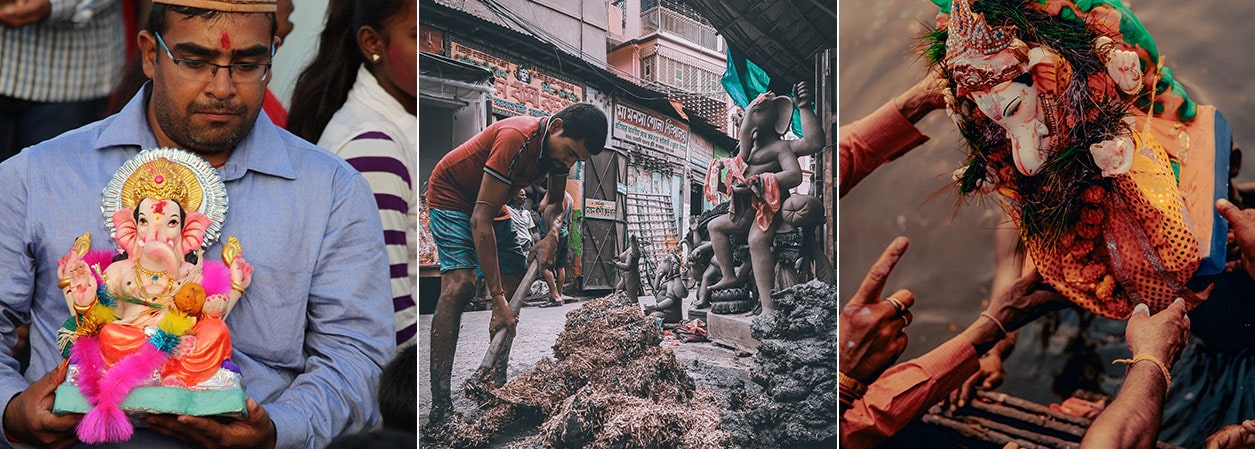
Ganesh Chaturthi is a ten-day festival that celebrates the birthday of Ganesha; the elephant-headed Hindu deity. The festival begins with the installation of beautifully sculpted Ganesha idols in the homes and mandaps (large canopies). During the 10-day festival, Ganesha’s favourite sweets and savouries are made and distributed among the people. On the 11th day, the Ganesha idols are taken in a procession with much fanfare and immersed in the sea symbolising a ritual in which Ganesha returns to his abode, taking along with him the worries and troubles of his devotees. The longest immersion procession is that of Mumbai’s Lalbaughcha Raja, which starts at around 10 am and ends the next morning, taking nearly 24 hours.
Insider Tip: Arrive Mumbai a couple of days early to witness the preparations for Ganesh Chaturthi. We are happy to curate a tour taking in the pre-festivities which is a fun culturally enriching experience. Continue to Sawantwadi (more in our Explore section) to experience Ganesh Chaturthi without the crowds of Mumbai during the festival.
Write to your relationship manager to know more about the tour.
Stay at the Taj Mahal Palace, Mumbai
India’s first luxury hotel, the Taj Mahal Palace stands like a mirage by the Arabian Sea and embodies the indomitable spirit of Mumbai, the city of dreams. With its Indo-Saracenic arches and distinctive red-tiled Florentine gothic dome, carved with Victorian Gothic and Romanesque details along with Edwardian touches on the roof, it is truly an architectural jewel. The massive 240-feet high central dome serves as an official daytime triangulation point for ships of the Indian Navy, to this day! The Taj Mahal Palace is India’s first hotel to have electricity, American fans, German elevators, Turkish baths, and English butlers. Mumbai’s first licensed bar – the Harbour, India’s first nightclub, an air-conditioned ballroom, an all-day-dining restaurant – Shamiana, the first Japanese restaurant Wasabi by Morimoto, and Sichuan restaurant – Golden Dragon. French designer Pierre Cardin held Mumbai’s first fashion show in its ballroom. From royalties to dignitaries, some of the world-famous guests who have resided here include – King George V and Queen Mary, famed violinist and conductor Yehudi Menuhin to Jazz legend Micky Correa, George Bernard Shaw, The Beatles, Mick Jagger, Alfred Hitchcock, Zubin Mehta, the Dalai Lama, Bill and Hillary Clinton, Barack Obama and even Neil Armstrong!
https://www.tajhotels.com/en-in/taj/taj-mahal-palace-mumbai/
Picture Gallery
Ganesh Chaturthi is one of the most popular festivals celebrated with great fanfare in the state of Maharashtra. Commemorating the birth of the elephant-headed Hindu deity Ganesha, the festival is celebrated for ten days during the months of August – September. Lord Ganesha is hailed as the giver of knowledge, wisdom, prosperity, and good fortune. The households celebrate the festival by installing an idol of Lord Ganesha and worshipping it for over ten days. The houses are cleaned and the idol is brought in with the family members chanting religious hymns. The festival ends with the ‘Ganesh Visarjan’ ritual where the idol is immersed in the water; it is done as a procession with a huge crowd accompanying the idol along with a lot of music and dance.
RESOURCES
SITE LINKS
CONTACT US
+ 91 (124) 4563000
Tower B, Delta Square, M.G. Road, Sector 25, Gurgaon - 122001, Haryana, National Capital Region of Delhi, India


